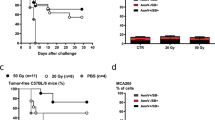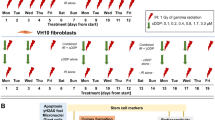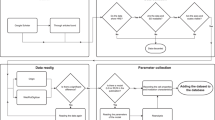Abstract
Recent data suggest that aberrant function of the wild type p53 protein (WTp53) may alter cellular survival following DNA damage through cellular pathways involving apoptosis and cell-cycle checkpoints, but little is known concerning it's possible role in DNA repair. In the present study, the ionizing radiation sensitivity was determined for a series of rat embryo fibroblast (REF) cell lines transfected with an activated form of the H-ras oncogene alone, or in combination with a variety of missense-mutant p53 (MTp53) alleles. Transformed REF clones which expressed exogenous MTp53 and p21ras proteins (CLASS II clones) were generally radioresistant in culture as determined by higher values for the surviving fraction after 2 Gy (SF2 value) and the radiation dose required to reduce survival to a fraction of 0.1 (D10 value), compared either to transformed REF clones expressing p21ras protein alone (CLASS I clones), or to non-transfected REF control cell lines expressing baseline endogenous levels of p21ras and WTp53 protein. The increased radioresistance observed in the CLASS II clones (following both HDR- and LDR-irradiation), was significantly correlated with increased expression of MTp53 protein, and a decreased radiation-induced G1 arrest response. The variability observed in clonogenic radiosensitivity among REF clones was not explained by differential radiation-induced apoptosis. Using the Comet assay performed after continuous low dose-rate (LDR)-irradiation, MTp53-expressing REF clones were also found to be more proficient at the rejoining of DNA double-strand breaks (DNA-dsb), compared to WTp53-expressing REF clones. These results suggest that an enhanced DNA and cellular repair capacity may, in part, explain the increased radiation survival observed in some MTp53-expressing transformed fibroblasts and tumours.
This is a preview of subscription content, access via your institution
Access options
Subscribe to this journal
Receive 50 print issues and online access
$259.00 per year
only $5.18 per issue
Buy this article
- Purchase on Springer Link
- Instant access to full article PDF
Prices may be subject to local taxes which are calculated during checkout
Similar content being viewed by others
Author information
Authors and Affiliations
Rights and permissions
About this article
Cite this article
Bristow, R., Hu, Q., Jang, A. et al. Radioresistant MTp53-expressing rat embryo cell transformants exhibit increased DNA-dsb rejoining during exposure to ionizing radiation. Oncogene 16, 1789–1802 (1998). https://doi.org/10.1038/sj.onc.1201935
Received:
Revised:
Accepted:
Published:
Issue Date:
DOI: https://doi.org/10.1038/sj.onc.1201935
Keywords
This article is cited by
-
The role of DNA damage responses in p53 biology
Archives of Toxicology (2015)
-
p53 in recombination and repair
Cell Death & Differentiation (2006)
-
p53: traffic cop at the crossroads of DNA repair and recombination
Nature Reviews Molecular Cell Biology (2005)
-
Detection of genetic instability at HER-2/neu and p53 loci in breast cancer cells sing Comet–FISH
Breast Cancer Research and Treatment (2005)
-
Inhibition of ?-glutamyl transpeptidase activity decreases intracellular cysteine levels in cervical carcinoma
Cancer Chemotherapy and Pharmacology (2004)



